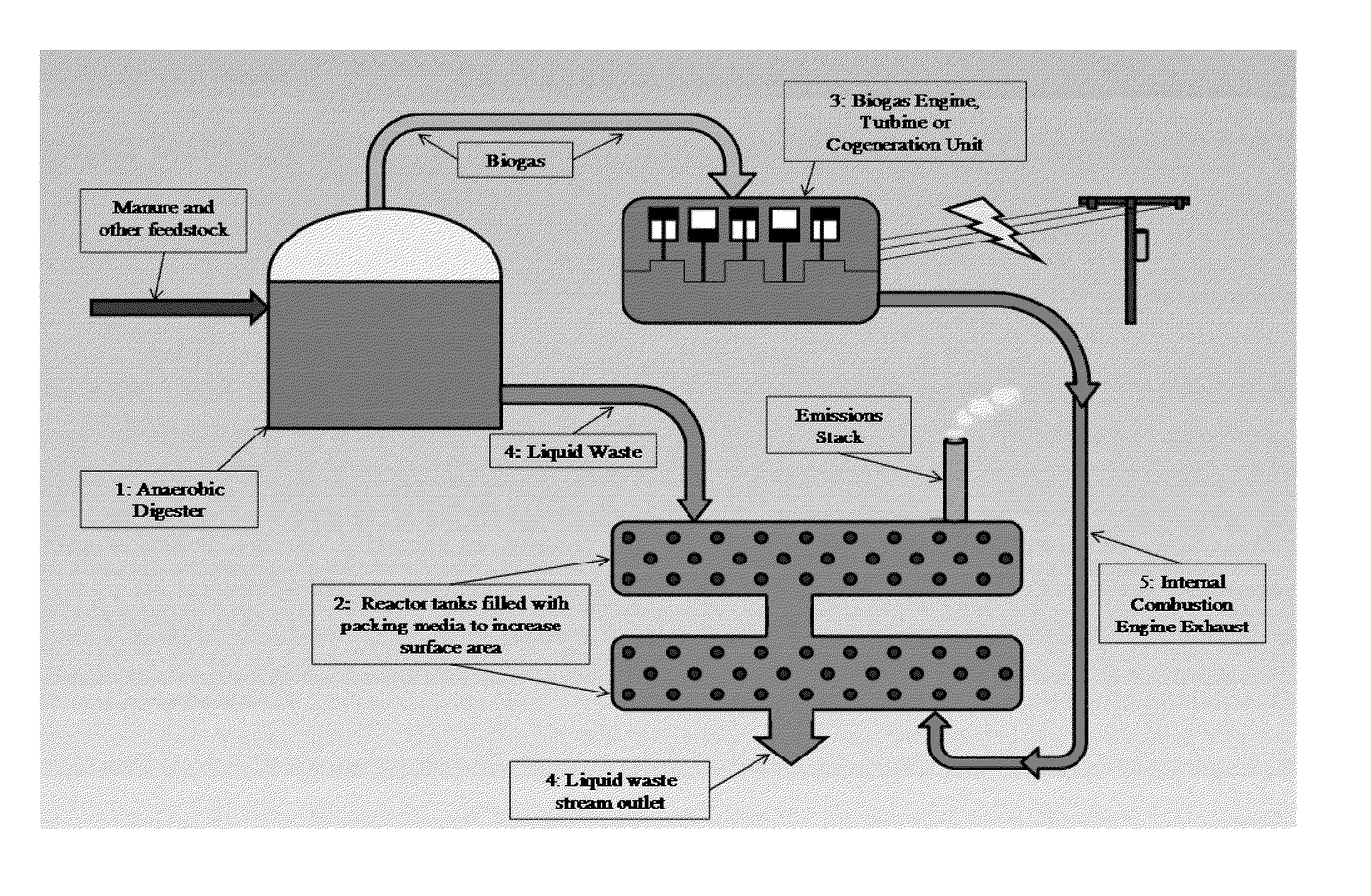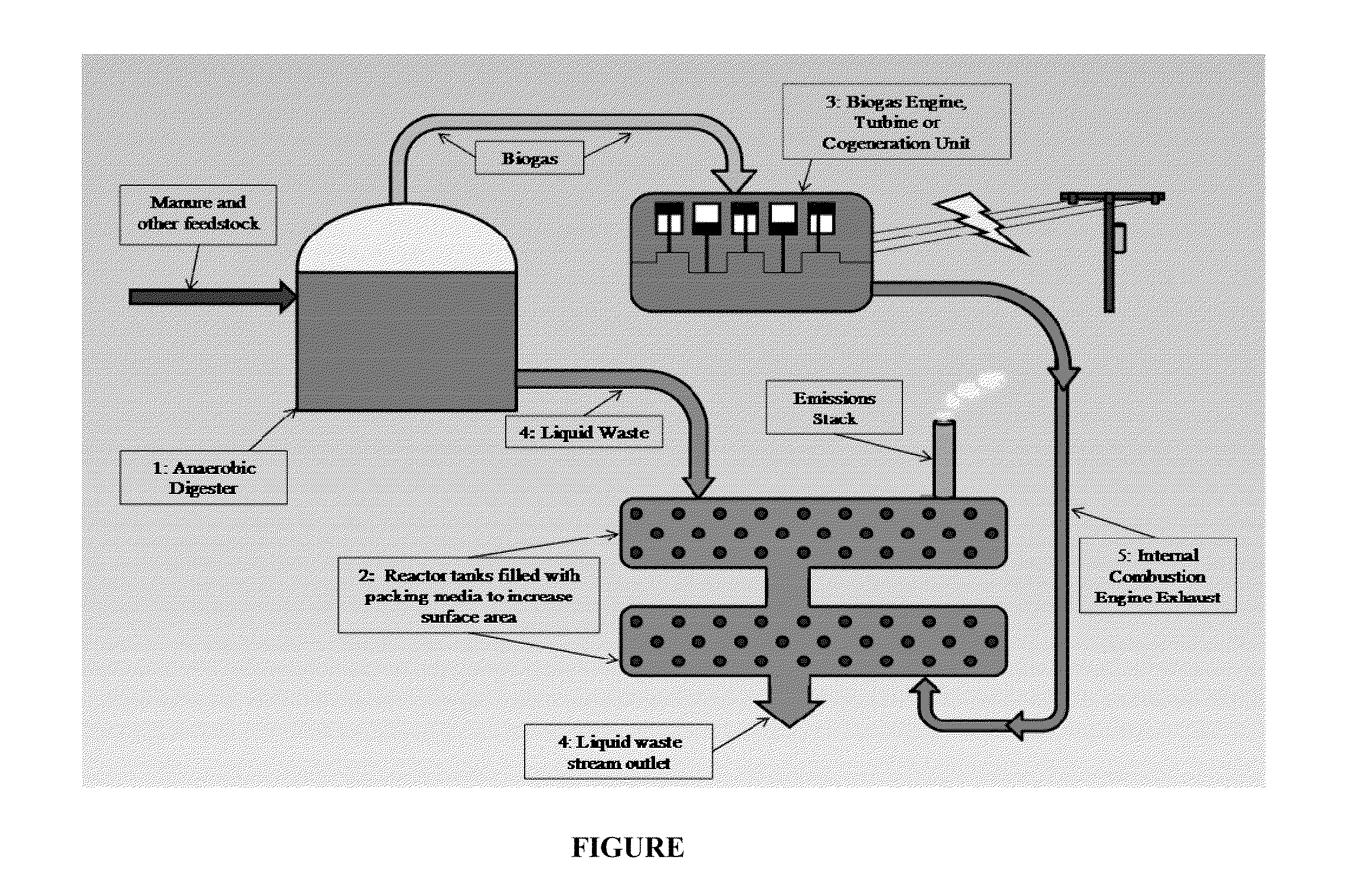NOx removal system for biogas engines at anaerobic digestion facilities
a biogas engine and anaerobic digestion technology, which is applied in the direction of biomass after-treatment, biological water/sewage treatment, and separation processes, can solve the problems of biogas engine pollution, stringent nox emission standards, and less attractive to fly and other nuisance species
- Summary
- Abstract
- Description
- Claims
- Application Information
AI Technical Summary
Benefits of technology
Problems solved by technology
Method used
Image
Examples
example 1
Optimization of the Scrubbing Apparatus Configuration: Temperature and Pressure within the Absorption Tower
[0065]The temperature within the absorption tower is kept below 38° C. or 100° F. to ensure efficient absorption of NOx. The high ambient temperature of the biogas exhaust emissions stream can be maintained by piping the exhaust to the absorption tower. The optimal distance between the cogeneration unit and the absorption tower is determined by measuring exhaust temperature as a function of distance from the engine.
[0066]The heat generated by the absorption of NO2 into water and subsequent reaction with water to yield nitric acid (exothermic, 135 kJ / mole2) is dissipated through the relatively large volume of waste stream water being cycled through the absorption tower. Furthermore the anaerobic digester liquid waste stream will not exceed 100° F. The added cost associated with installation and maintenance of refrigeration equipment should, therefore, be avoided.
example 2
Optimization of the Scrubbing Apparatus Configuration: pH of the Absorbing Liquid within the Absorption Tower
[0067]The optimum operating range for anaerobic digestion is pH 6.8 to 8.5. This is well above the range where NO2 absorption begins to slow down (50% HNO3 where the pH is effectively zero). Furthermore, due to the constant flow design of most anaerobic digesters, “fresh” aqueous waste will be cycling through the absorption tower during all periods of operation. Thus the rate of NO2 absorption as a function of water pH should remain constant and high.
example 3
Optimization of the Scrubbing Apparatus Configuration: Retention Time of the Emissions within the Absorption Tower
[0068]In order to obtain sufficiently long retention times a number of absorption chambers are combined in series. The number and size of these chambers is determined by the volume of emissions generated per unit time. As a rough approximation, the volume of the emissions should be equal to the volume of biogas burned plus the volume of air mixed into the gas at the time of combustion. The temperature of the emissions will greatly expand the volume of the emissions, so this approximation is only true after the emissions have cooled.
PUM
| Property | Measurement | Unit |
|---|---|---|
| temperature | aaaaa | aaaaa |
| pressure | aaaaa | aaaaa |
| retention time | aaaaa | aaaaa |
Abstract
Description
Claims
Application Information
 Login to View More
Login to View More - R&D
- Intellectual Property
- Life Sciences
- Materials
- Tech Scout
- Unparalleled Data Quality
- Higher Quality Content
- 60% Fewer Hallucinations
Browse by: Latest US Patents, China's latest patents, Technical Efficacy Thesaurus, Application Domain, Technology Topic, Popular Technical Reports.
© 2025 PatSnap. All rights reserved.Legal|Privacy policy|Modern Slavery Act Transparency Statement|Sitemap|About US| Contact US: help@patsnap.com


